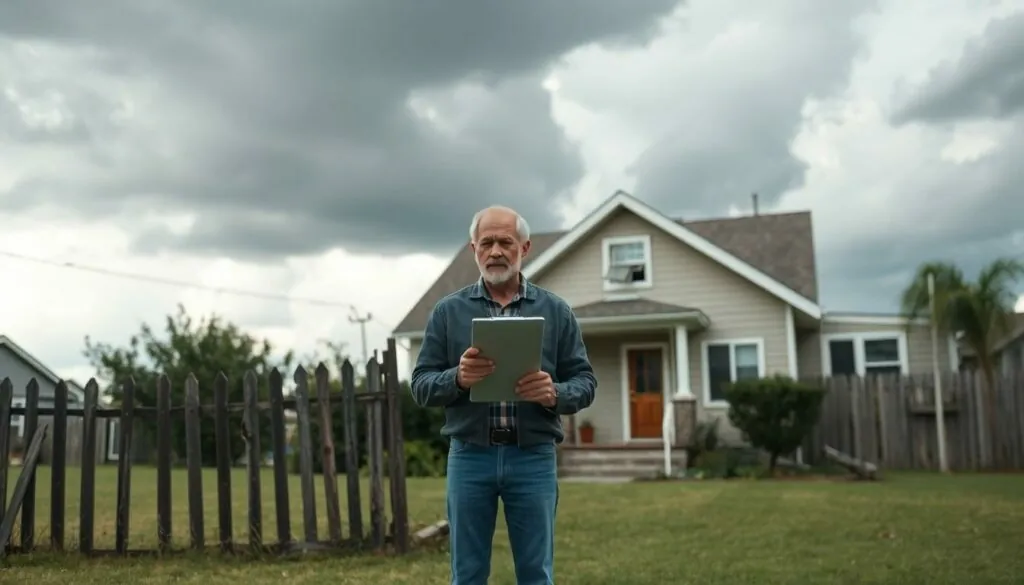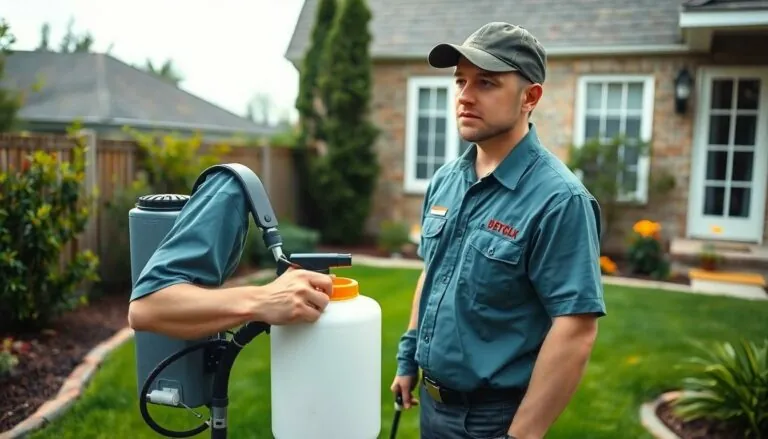Table of Contents
ToggleWhen disaster strikes, the last thing anyone wants to worry about is whether their home insurance has their back. Picture this: a tornado whips through your neighborhood, and you’re left wondering if your policy covers flying cows and uprooted trees. It’s a wild thought, but understanding what home insurance really covers can save homeowners from a world of financial hurt.
Natural disasters can feel like Mother Nature’s way of reminding us who’s boss. But before you start building that bunker in your backyard, it’s crucial to know if your insurance policy is up to snuff. From floods to earthquakes, the coverage can be as unpredictable as the weather itself. So let’s dive into the nitty-gritty of home insurance and find out if it’s your trusty sidekick or just a fancy piece of paper.
Overview of Home Insurance
Home insurance provides financial protection against various risks, including damage to your home and personal property. Policies typically cover incidents such as theft, fire, and specific types of natural disasters. It’s crucial to review the terms since coverage varies significantly.
Standard home insurance generally doesn’t include all natural disasters. Flood insurance, for instance, requires a separate policy. Homeowners often assume that their policies cover flood damage, but this misconception can lead to substantial financial losses.
Earthquake coverage is another area of concern. Most standard policies exclude earthquakes, making it essential for homeowners in vulnerable regions to add this protection. Homeowners may face catastrophic expenses without this additional coverage after an earthquake strikes.
Understanding deductibles is vital. Higher deductibles usually result in lower premiums, but this trade-off means homeowners pay more out-of-pocket during claims. Therefore, evaluating how much risk one can afford to take helps in selecting the right deductible level.
Regularly reviewing coverage ensures it meets current needs. Life changes, such as renovations or the addition of valuable possessions, necessitate policy updates to maintain sufficient protection. Homeowners should consult their insurance agents to address any uncertainty and clarify coverage options.
Ultimately, comprehensive knowledge of home insurance policies helps homeowners make informed decisions, protecting them against financial strain during disasters.
Types of Natural Disasters Covered

Understanding natural disaster coverage in home insurance is vital for homeowners. Some events are often covered, while others may require separate policies.
Earthquakes
Earthquake coverage usually isn’t included in standard home insurance policies. Homeowners often need to purchase a separate earthquake endorsement or policy for protection. This coverage helps with repair costs for damages caused by seismic activity. In areas prone to earthquakes, homeowners should consider this additional coverage to avoid significant financial losses. Checking local regulations or state requirements may offer further insights into available options.
Floods
Standard home insurance generally excludes flood damage. Homeowners living in flood-prone regions must secure a specific flood insurance policy from the National Flood Insurance Program (NFIP) or private insurers. Such policies provide essential protection against water damage from heavy rains, storm surges, or rising rivers. Understanding flood risk in your area can inform purchasing decisions regarding flood insurance. Claiming benefits requires documentation of the damage and adherence to the policy’s terms.
Hurricanes
Hurricane damage may be partially covered under standard home insurance, but specific elements can vary by location and policy. Wind damage is often included, while flood damage typically requires separate flood coverage. Homeowners in coastal areas should assess their hurricane risk thoroughly. Purchasing adequate coverage ensures protection from high winds, hail, and water damage from heavy rainfall. Regularly reviewing and updating these policies ensures they meet changing weather patterns and available protections.
Common Exclusions in Home Insurance Policies
Home insurance policies often include exclusions for specific natural disasters, which can lead to unexpected financial burdens. Understanding these exclusions is vital for homeowners.
Wildfires
Most standard home insurance policies typically exclude wildfire damage. Coverage for losses caused by wildfires requires a separate policy or endorsement. Homeowners in fire-prone regions should assess their risk and consider additional coverage options. These policies specifically address damage caused by flames, smoke, and ash. They help protect not just structures but also personal belongings affected by wildfires.
Tornadoes
Tornado damage often falls outside the scope of standard home insurance policies. While various natural disasters may receive limited coverage, tornadoes usually require special provisions. Homeowners need to verify if their policy includes windstorm protection, as this is essential for tornado-related damage. Damage from flying debris and high winds resulting from a tornado can result in significant loss. Review coverage options carefully to avoid gaps in protection during a tornado event.
Factors Influencing Coverage
Home insurance coverage varies significantly based on multiple factors. Understanding these elements enables homeowners to ensure adequate protection.
Location
Geographical location plays a crucial role in determining coverage. Areas prone to specific natural disasters often face higher premiums or exclusions. For instance, living in flood-prone zones necessitates purchasing separate flood insurance policies. On the other hand, homes located in earthquake zones may require additional coverage or endorsements. Some insurers also consider local climate and infrastructure when assessing risk levels, impacting both coverage options and costs.
Policy Type
The type of insurance policy directly influences coverage against natural disasters. Standard homeowners’ policies typically cover risks like theft and fire, but essential disaster coverage, such as for earthquakes and floods, often isn’t included. Specialized policies, such as comprehensive or all-risk policies, may provide broader coverage options. Homeowners should compare different policy types to find suitable protection, accounting for specific risks associated with their location. Tailoring coverage to individual needs ensures homeowners receive the necessary financial safety during unforeseen disasters.
Understanding home insurance coverage is crucial for protecting against natural disasters. Homeowners must recognize the limitations of standard policies and the necessity for additional coverage in high-risk areas. By regularly reviewing their policies and considering specific endorsements for disasters like floods and earthquakes, they can avoid significant financial losses.
It’s essential to stay informed about the types of coverage available and the exclusions that may apply. This proactive approach not only ensures adequate protection but also provides peace of mind during emergencies. Making informed decisions about home insurance can safeguard homeowners from the unexpected challenges posed by natural disasters.




